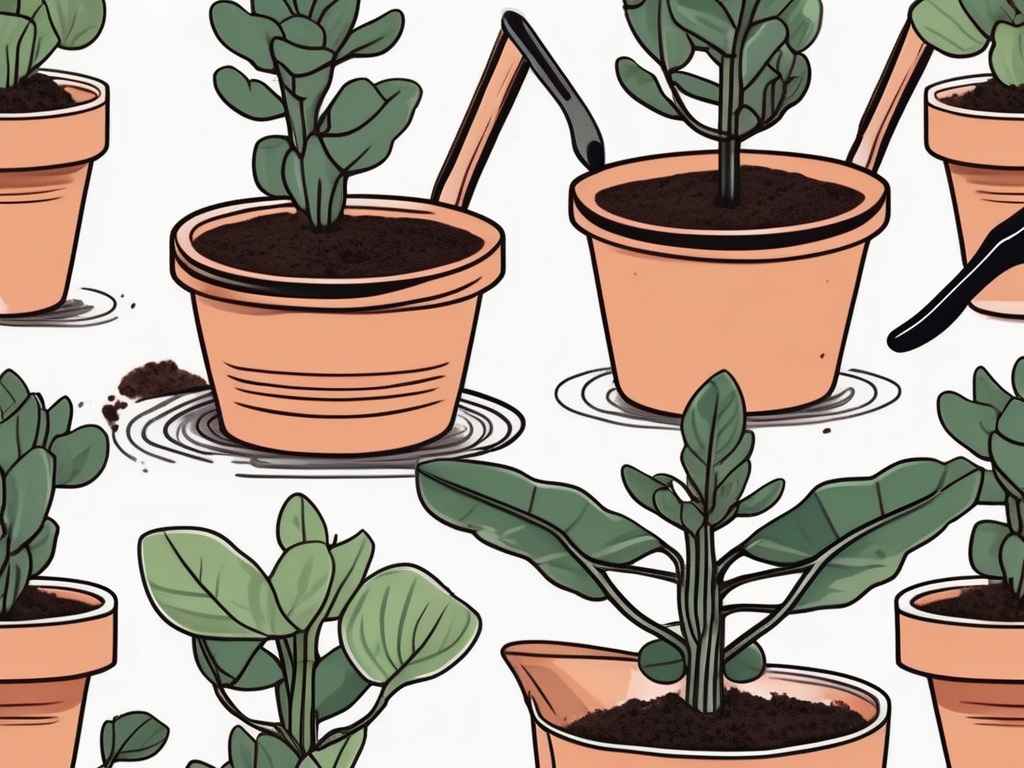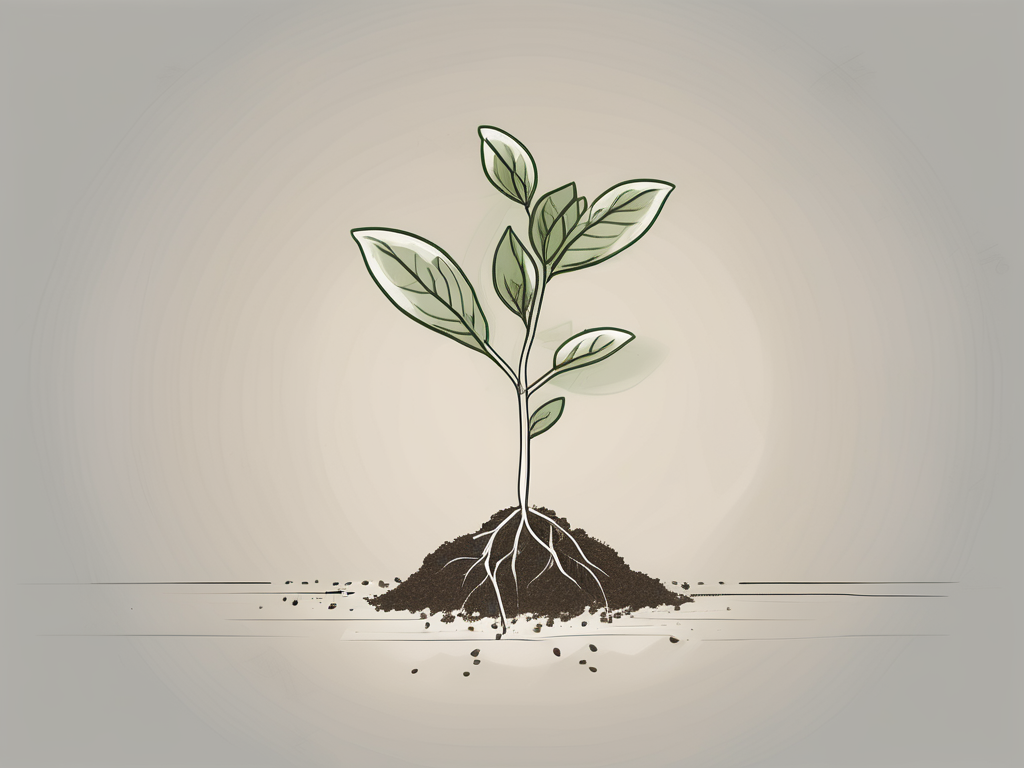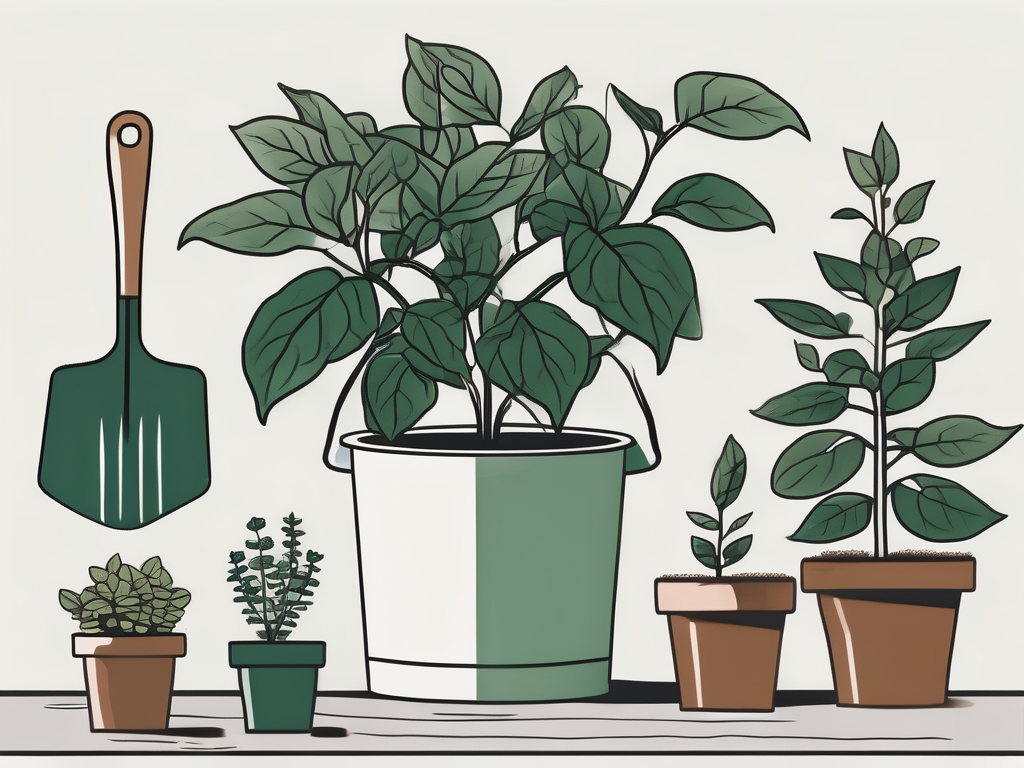
Repotting a Kalanchoe might not be the first task on your gardening to-do list, but it's one of those things that can really make a difference in the health and vibrancy of your plant. If you've ever noticed your Kalanchoe looking a bit cramped or its growth has stalled, it might be time for a new pot and fresh soil.
In this article, we'll cover everything you need to know about repotting your Kalanchoe. From understanding why you should repot to step-by-step instructions on how to do it, we've got you covered. Whether you're a seasoned plant lover or just starting out, these tips will help ensure your Kalanchoe thrives.
Why Repot Your Kalanchoe?
Before getting into the how-to's, let's talk about the why's. Kalanchoes, like all potted plants, can outgrow their containers. When the roots have no more room to spread, they can become root-bound, which means they're all bunched up at the bottom of the pot. This can lead to poor water drainage and nutrient uptake, making your plant look sad and droopy. And nobody wants a sad plant!
Another reason to repot is to refresh the soil. Over time, soil can lose its nutrients and structure, becoming compacted and less effective at holding water and providing the necessary minerals. A new mix will give your Kalanchoe a fresh start, helping it to absorb water and nutrients more efficiently.
Here's a quick checklist of signs your Kalanchoe might need a new home:
- Roots are growing out of the drainage holes.
- Water sits on top of the soil for too long without absorbing.
- The plant looks top-heavy or is leaning over.
- Growth has noticeably slowed or stopped.
- The soil looks depleted or has a white crust on top.
Recognizing these signs early can help you act before any long-term damage occurs, making repotting a proactive step in your Kalanchoe's care.
When to Repot Your Kalanchoe
Timing is everything, right? Just like we wouldn't want to move houses in the middle of a snowstorm, your Kalanchoe has its own preferences for when to move. The best time to repot is during the plant's active growing season, which for most Kalanchoes is in the spring and early summer. This timing gives the plant the best chance to recover quickly and start putting out new growth.
However, if you notice your plant is severely root-bound or the soil is in really poor condition, don't hesitate to repot it right away, even if it's not the ideal season. It's better to address the issue than to let the plant suffer until spring comes around.
On the flip side, you'll want to avoid repotting during the plant's dormant period, usually in the late fall and winter. During this time, the plant's growth slows down, and it doesn't have as much energy to recover from the stress of being moved. Think of it like asking someone to run a marathon after a big holiday meal—not the best idea!
Choosing the Right Pot and Soil
Now that you've decided it's time to repot, let's talk about the new digs. The pot you choose should be slightly larger than the current one, typically 1-2 inches wider in diameter. This gives the roots space to grow without overwhelming them with too much room. It's like finding the perfect pair of shoes—not too tight, not too loose.
When it comes to material, terracotta pots are a popular choice for Kalanchoes because they allow excess moisture to evaporate through their porous walls. This can help prevent overwatering, a common issue with succulents. However, if you prefer the look of ceramic or plastic, just make sure the pot has drainage holes to avoid waterlogging the roots.
As for soil, Kalanchoes prefer a well-draining mix. You can use a commercial cactus or succulent mix, or make your own by combining potting soil with sand or perlite. The key is to ensure the mix doesn't hold too much moisture, as Kalanchoes are susceptible to root rot if left in soggy conditions.
Here's a simple DIY soil mix recipe:
- 2 parts potting soil
- 1 part coarse sand or horticultural grit
- 1 part perlite or pumice
This blend provides good drainage and aeration, while still holding enough moisture for the plant to thrive.
Preparing Your Kalanchoe for Repotting
Before you start the actual repotting, a little preparation goes a long way. Begin by watering your Kalanchoe a day or two before you plan to repot. This makes it easier to remove the plant from its current pot and reduces stress on the roots.
Next, gather your supplies so you're not scrambling mid-process. Here's what you'll need:
- A new pot with drainage holes
- Fresh cactus or succulent soil mix
- A small trowel or spoon for scooping soil
- Gloves to protect your hands (optional but recommended)
- A watering can or spray bottle
With everything ready, gently remove the plant from its current pot by tipping it on its side and tapping the bottom. If it's stubborn, use a small tool to loosen the soil around the edges. Be careful not to yank or pull too hard, as this can damage the roots.
Once the plant is free, lightly shake off excess soil and inspect the roots. Trim away any that are brown or mushy with clean scissors, as these are signs of rot. Healthy roots should be firm and white or light tan in color.
The Repotting Process
Okay, now for the main event—repotting your Kalanchoe! Start by adding a layer of soil at the bottom of the new pot. This forms a base for your plant to sit on. Place the Kalanchoe in the center of the pot, adjusting the soil level so that the base of the plant sits just below the rim.
Hold the plant steady and begin filling in around the roots with your soil mix, using your fingers or a small tool to gently press it down. Avoid packing the soil too tightly, as this can restrict air flow to the roots. Think of it like tucking in a blanket—not too snug, but enough to keep the plant cozy.
Once the pot is filled, give it a light tap on the sides to settle the soil. Then, water the plant thoroughly, allowing the excess to drain out the bottom. This helps eliminate any air pockets and ensures the soil is evenly moist.
After watering, place your Kalanchoe in a bright spot with indirect sunlight. Avoid direct sun for a few days, as the plant may be sensitive after the move. And that's it! You've successfully repotted your Kalanchoe.
Caring for Your Newly Repotted Kalanchoe
With the hard part over, it's time to focus on aftercare. Your Kalanchoe will need a little TLC as it adjusts to its new environment. Keep an eye on the watering schedule, as the fresh soil will retain moisture differently than the old mix. Allow the top inch of soil to dry out before watering again.
In terms of light, Kalanchoes love bright, indirect sunlight. A spot near a window with sheer curtains works well, or you can place the plant a few feet away from a sunny window. Too much direct sunlight can scorch the leaves, while too little can lead to leggy growth.
If you notice any signs of stress, such as wilting or yellowing leaves, adjust the watering or light conditions accordingly. It may take a few weeks for your plant to fully settle in and resume normal growth, so be patient and give it time to adapt.
Common Repotting Mistakes to Avoid
Even with the best intentions, it's easy to make a few missteps along the way. Here are some common repotting mistakes and how to avoid them:
- Choosing a pot that's too large: Going up too many sizes can lead to overwatering issues, as the extra soil holds more moisture than the plant needs.
- Using the wrong soil: Regular potting soil can retain too much water, leading to root rot. Always opt for a well-draining succulent mix.
- Overwatering: After repotting, your plant is more vulnerable to overwatering. Stick to a light watering schedule and watch for signs of moisture stress.
- Neglecting root care: Always inspect and trim any damaged roots before repotting to prevent future problems.
By keeping these tips in mind, you'll help ensure your Kalanchoe has the best possible start in its new home.
Repotting and Interior Design: Making Your Kalanchoe a Home Star
While the health of your Kalanchoe is a top priority, let's not forget about aesthetics. Repotting offers a great opportunity to reconsider your plant's place in your home decor. With the right pot and placement, your Kalanchoe can become a standout feature in any room.
Consider the color and style of the new pot. A minimalist ceramic pot in a neutral tone can complement any decor style, while a vibrant, patterned pot can add a splash of personality. The choice is yours, but don't be afraid to let your creativity shine.
Placement is another key factor. Kalanchoes do well in living rooms, kitchens, and bathrooms where they can get plenty of bright, indirect light. You might place yours on a windowsill, a shelf, or even hang it in a sunny spot. Just be sure it's not too close to a drafty window or a heat source, as temperature extremes can stress the plant.
By integrating your Kalanchoe into your home decor, you'll not only enhance your space but also create a cozy environment for your plant to thrive. It's a win-win!
Frequently Asked Questions About Kalanchoe Repotting
As with any plant care task, repotting can raise a few questions. Here are some common ones that might pop up:
- How often should I repot my Kalanchoe? Generally, every 1-2 years is a good rule of thumb, depending on the plant's growth rate and the condition of the soil.
- Can I use regular potting soil for my Kalanchoe? It's best to use a well-draining cactus or succulent mix to prevent overwatering and root rot.
- What if my Kalanchoe is flowering—should I wait to repot? If possible, wait until the flowering period is over to avoid stressing the plant. However, if the roots are severely cramped, prioritize repotting.
- My Kalanchoe looks wilted after repotting. Is this normal? Some wilting is normal as the plant adjusts. Make sure it's getting the right light and water conditions, and it should bounce back in a week or two.
These answers should help clear up any uncertainties, but remember that plants are living things with their own quirks. Sometimes, a little trial and error is the best way to learn.
Final Thoughts
Repotting your Kalanchoe is a simple yet effective way to promote its health and growth. By choosing the right pot, soil, and timing, you'll set the stage for a thriving plant. Plus, with a bit of creative flair, you can also enhance your home's decor.
At Cafe Planta, we're all about helping you care for your plants. If you have any questions, feel free to email us, or send us a message on Instagram. We believe plants bring people together, and we're here to support your plant journey every step of the way.












